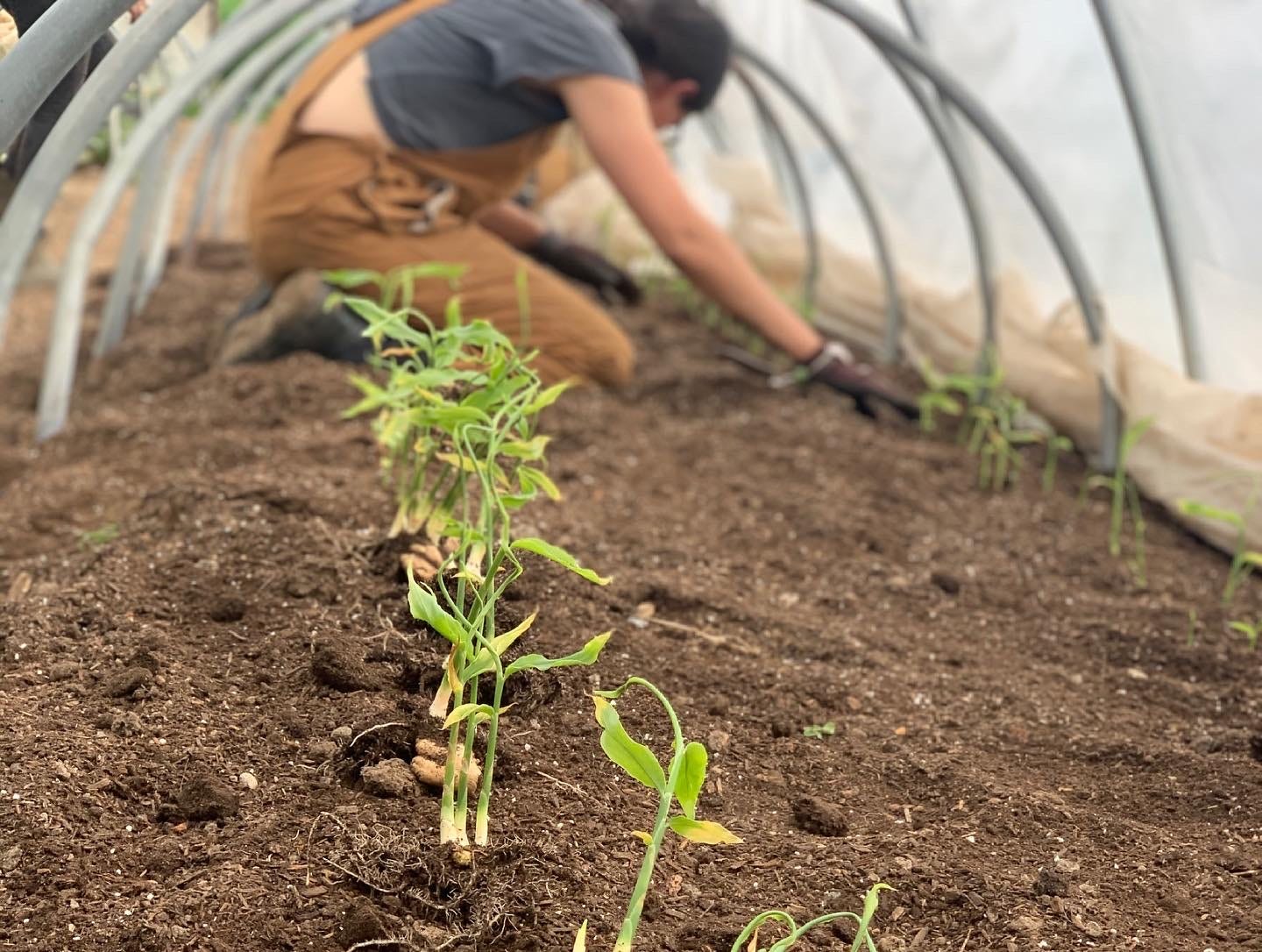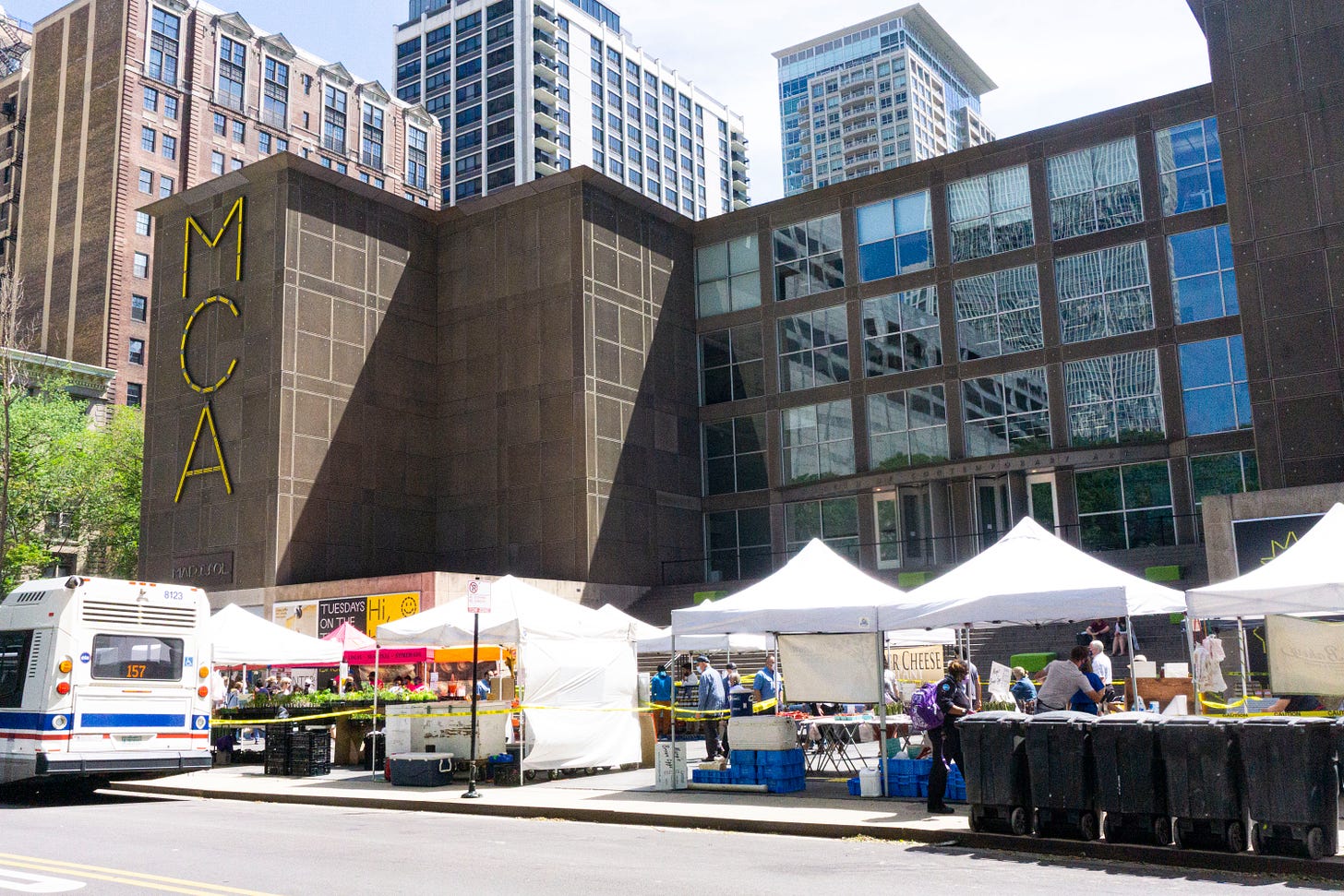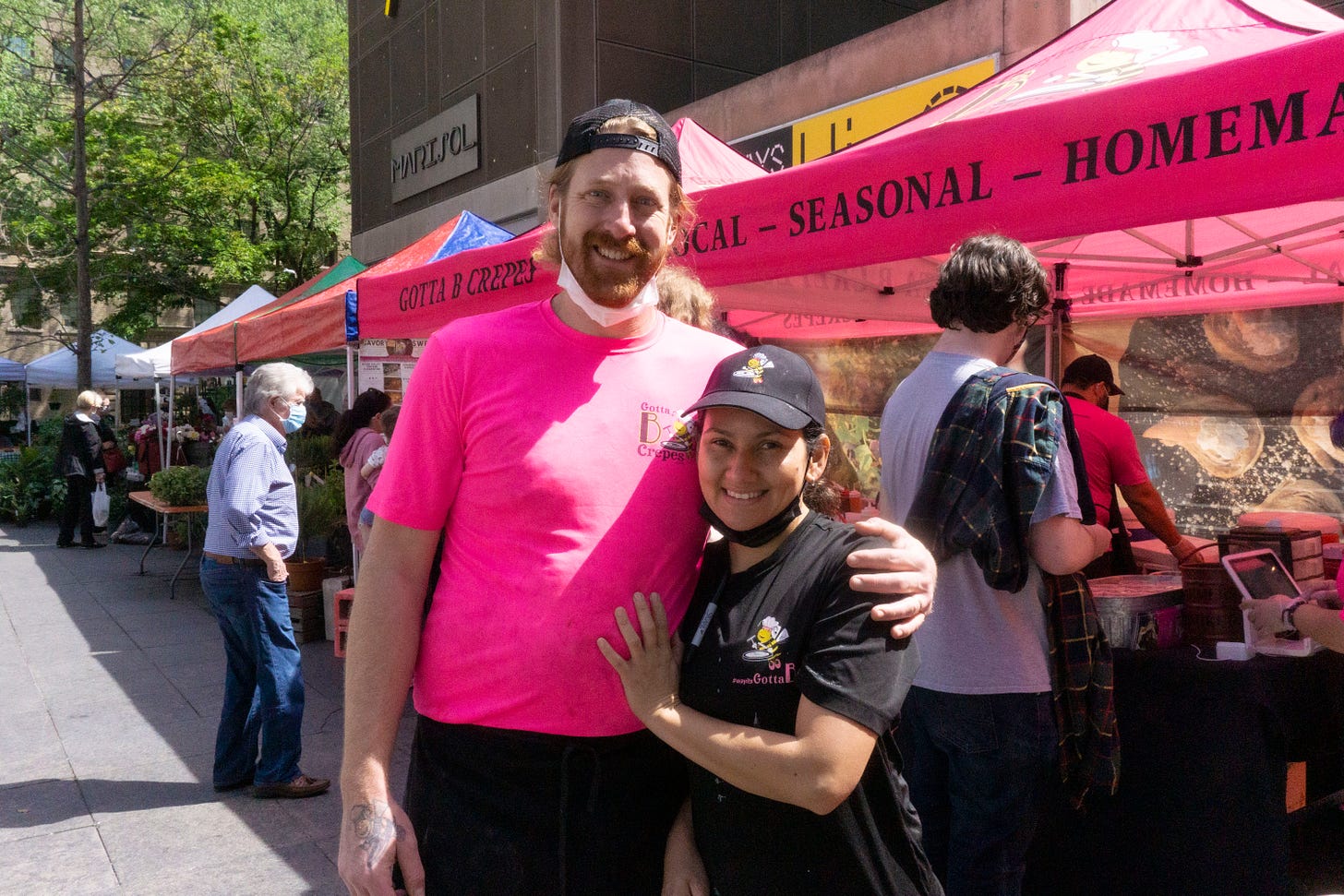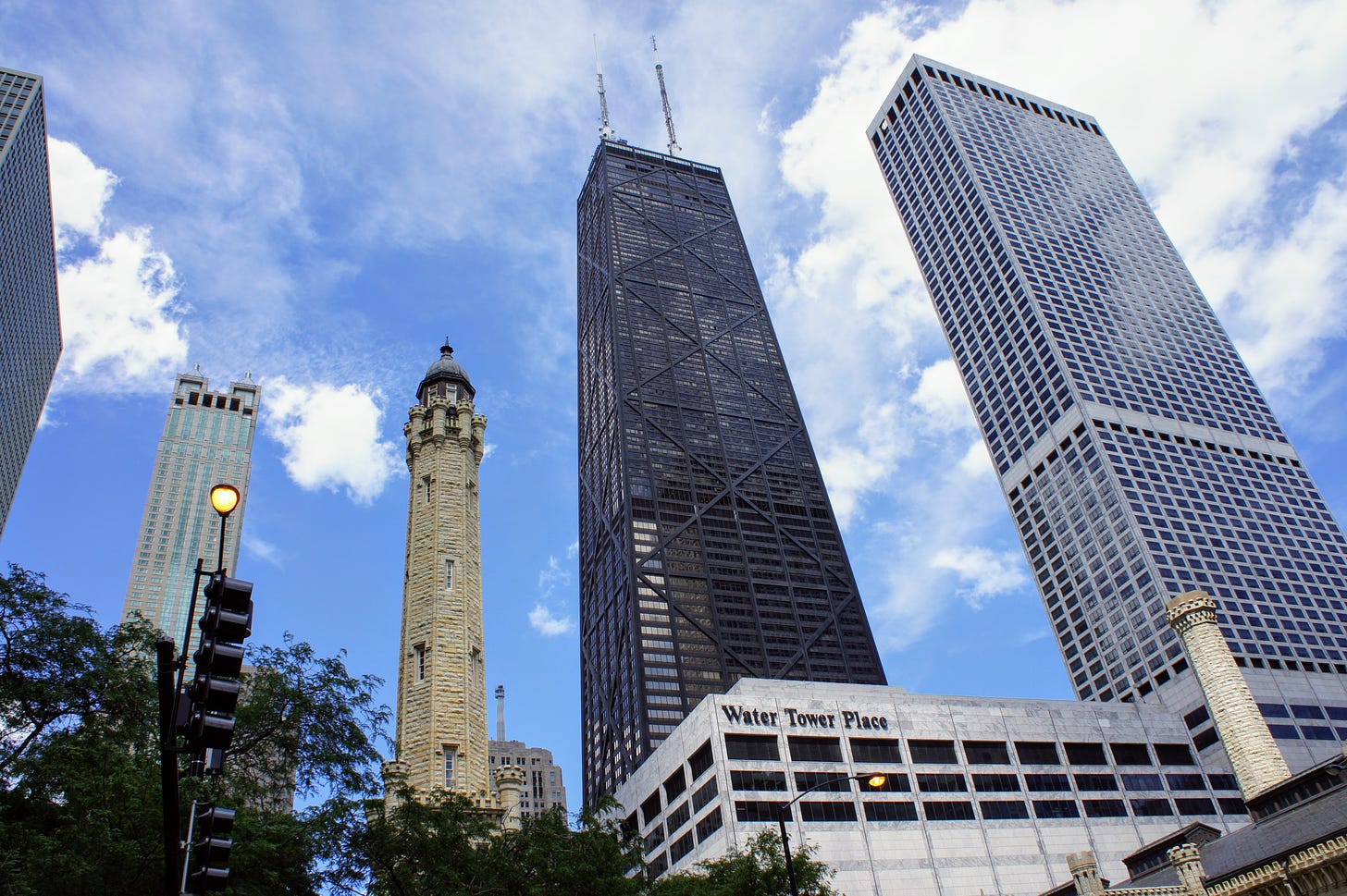Navigating Farming's Climate Challenge
Wild Trillium Farm's Seasons of Change, and an artful market opens
Today’s Chicago Metro Farmers Markets
(* denotes season opener)
Wednesday, June 2
Accuweather forecast: Intervals of clouds and sunshine, high 69
Weather.com forecast: Partly cloudy a.m., cloudy p.m., stray shower, high 68
Andersonville Farmers Market, 1500 W. Catalpa Ave., Chicago
3 p.m. to 7 p.m.
Elmhurst Farmers Market, 541 S. York St., Elmhurst*
7 a.m. to 1 p.m.
Garfield Ridge Farmers Market, 6072 S. Archer Ave., Chicago*
3 p.m. to 7 p.m.
Green City Wednesday Market, 1817 N. Clark St., Chicago
7 a.m. to 1 p.m.
Palos Heights Farmers Market, 12217 S. Harlem Ave., Palos Heights
8 a.m. to 1 p.m.
Ravinia Farmers Market, Jens Jensen Park, Highland Park*
7 a.m. to 1 p.m.
Riverside Farmers Market, 10 Pine Ave., Riverside*
2:30 p.m. to 7:00 p.m.
Uptown Farmers Market, W. Wilson Ave. & Broadway, Chicago
2:30 p.m. to 7:00 p.m.
In This Issue:
• Seasons of Change: Wild Trillium Farm and Farming’s Challenging Climate
• SOAR Market: Chicago Local Food Museum Piece
• Take a Quiz
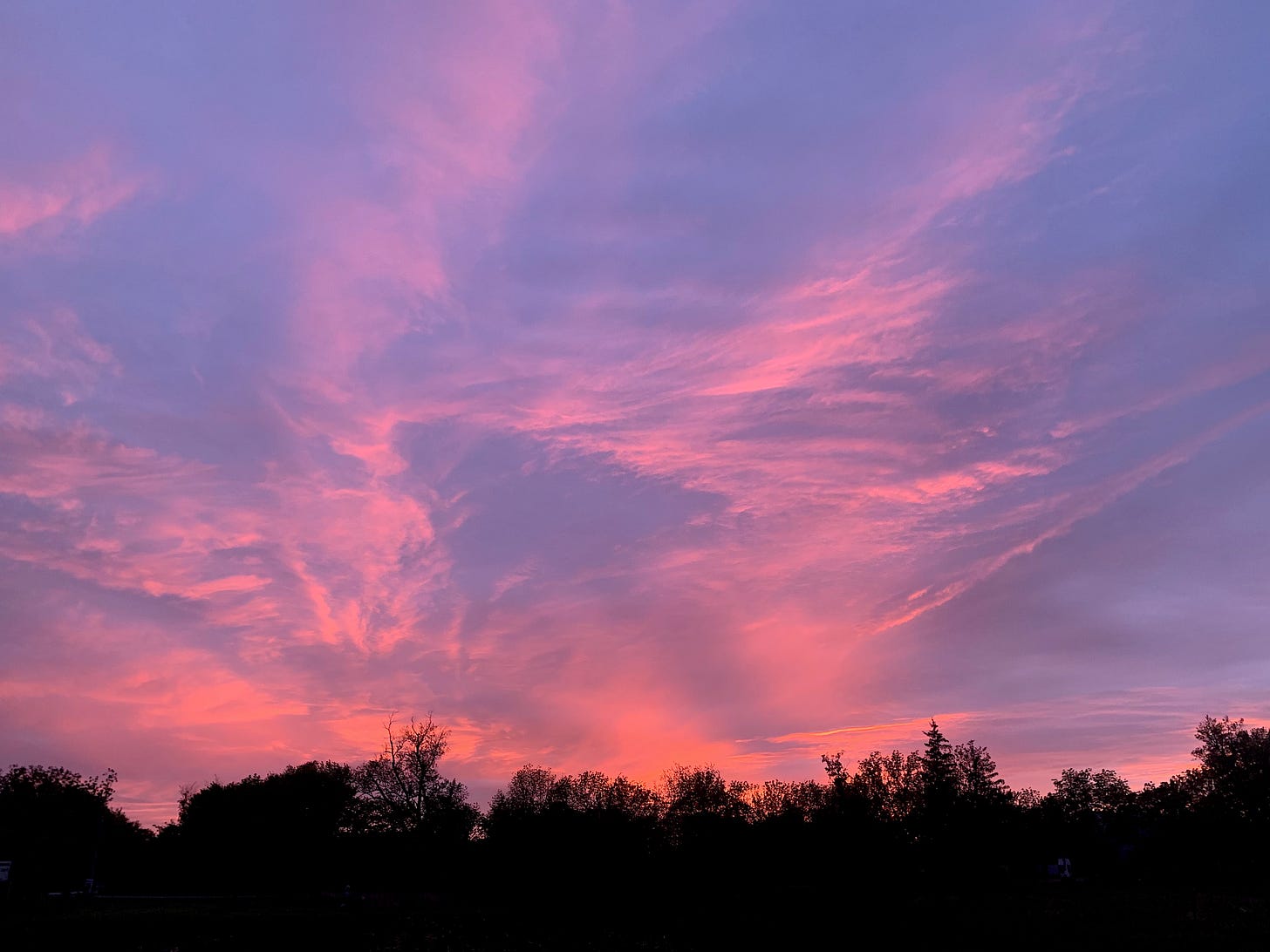
Wild Trillium Farm: Farming’s Challenging Climate
A Seasons of Change Story
This is Christine Johnson’s third contribution to Local Food Forum’s Seasons of Change farmer series, in which she writes about the first year on Wild Trillium Farm in Richmond, Illinois, that she started with lifelong friends Katie Szymanski and Emmy May.
In this installment, Christine writes about the challenging and sometimes frightening implications for farmers of climate change. Farming is always challenging and full of uncertainties, but perhaps more so for beginning farmers whose first May of growing was part March, part July, mostly parched, and only a little May.
Christine is a co-founder of ChiIllinois Young Farmers Coalition and is spearheading a renewal of that organization. She recently represented the Illinois Stewardship Alliance at a news conference with Illinois U.S. Rep. Lauren Underwood, co-author of the proposed Farmers Fighting Climate Change legislation. Christine’s other thoughtful Seasons of Change pieces can be found here and here. — Bob
——————————
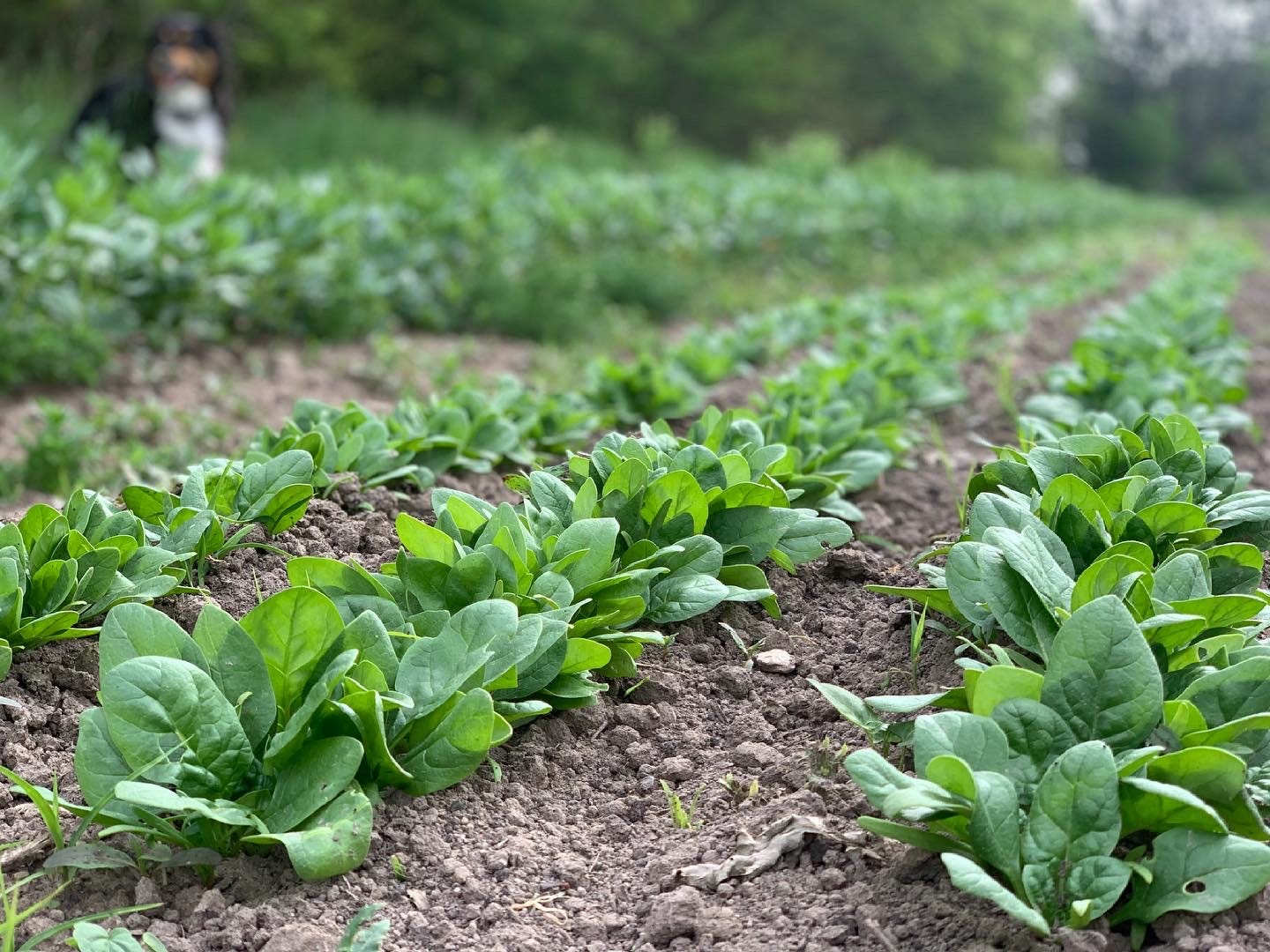
Last week, I woke from this nightmare. Only a few miles from home, a storm started. The wind started slowly, picking up speed, hurtling trash and branches against my path. Before long, I couldn’t walk against the velocity of the wind. A little while longer, the strength of the wind was too strong for bicycles, then cars, then airplanes.
The path home turned into a wind tunnel, the end too far away to distinguish. We were stranded, without water, without fire, without protection. Eventually, all greenery ripped from the ground and only barren ground in its place, we turned our backs away from safety. How long we waited, I am unsure. Snow came, and we hugged and danced to stay warm. I woke up shivering under a light blanket that had been perfect for the past week’s 80-plus temperatures.
Farming is always an act of managing as much as you can and submitting to what you can’t. This spring season has been particularly hard in this act.
Last weekend proved to be yet another hurdle that endless planning can only somewhat protect. Temperatures were expected to be a low of 37 degrees in Richmond, Illinois. While most crops survived (hoorah!), this boomerang of temperatures (95 last week) is sending a lot of crops into shock.
In addition, the lack of rain, record-setting for some northern regions of Illinois, has diminished the capacity of crops in the field to settle into the soil, their overall health already straining against the low levels of water. Without the tools they need to establish a healthy root system after planting, they are at the mercy of the atmosphere.
It’s a terrifying thought to think about what we could have lost this weekend. Frost fabric, kelp application and misting techniques can be employed to some crops, but not all are safe. Some of what we had planned and promised for our CSA customers may be lost.
Conversations go into the night of how we can accurately account for these losses of promise. In the end, does overnight shipping more seeds help this climate issue? Does buying from other farms, more aptly prepared for these circumstances, eliminate the cause of loss?
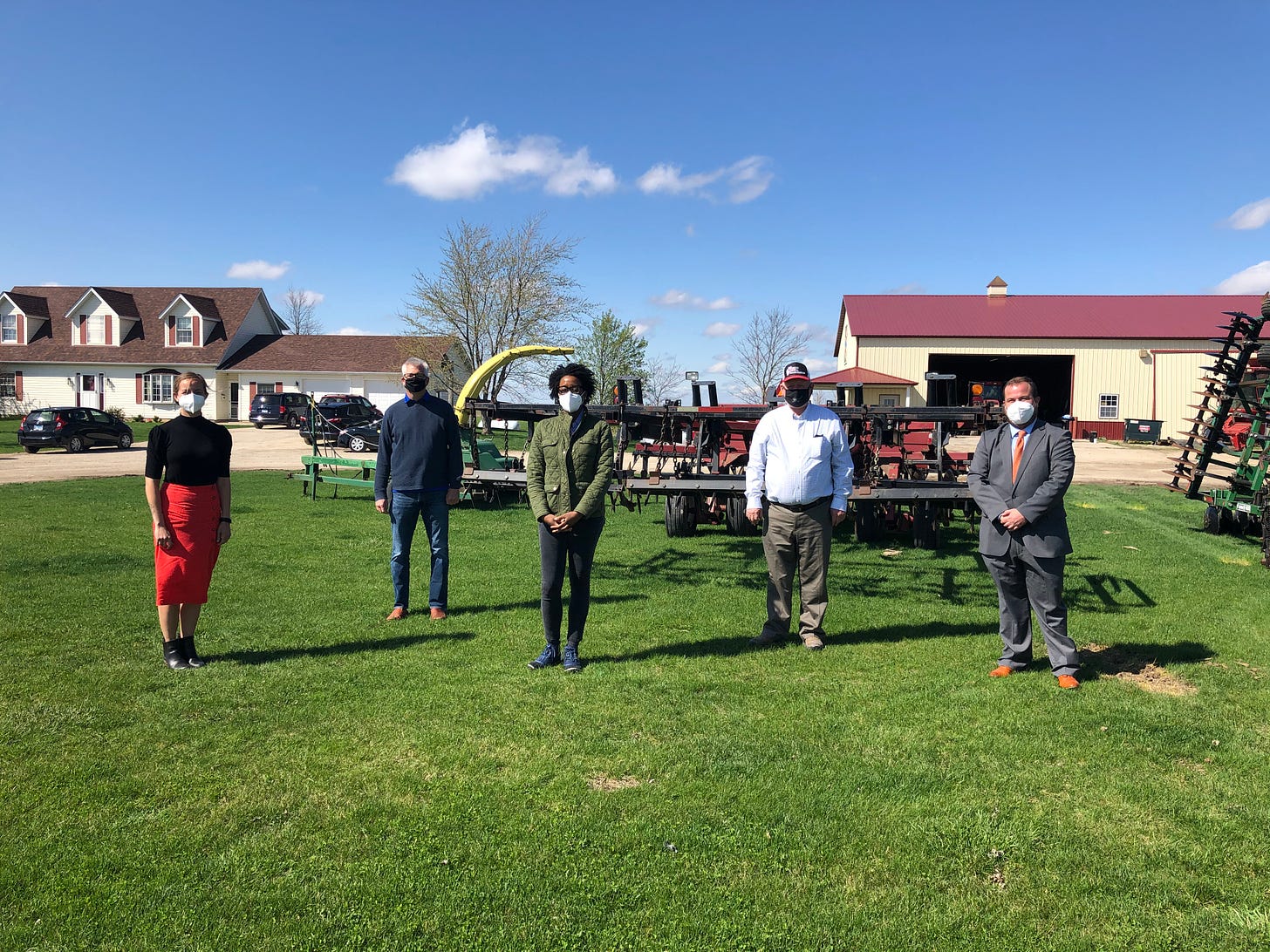
For me, it’s the conversation. Our food system is supported by its buyers, and if they are unaware that a whole crop of lettuce, peppers or sunflowers is lost on a small acreage farm because it’s quickly replaced by a larger farm, how will our buying habits change? How will our palates develop to appreciate the sweetness of a berry or the crunch of a cucumber that survived against the odds of a rapidly changing climate? Will the food we depend on months outside of their availability season adapt faster or slower than the farmers themselves?
I’m equally grateful for this challenge while terrified of the challenges that will conquer us. Farmers have been adapting for centuries, but the changes we are now experiencing are back to back, season to season.
I work for local food systems to thrive and feed their communities. Additional work is being done by local and national groups to provide resources to those to manage these climate challenges and counter them with techniques to increase balance for the future.
The New York Times just recently detailed a new diet: the Climatarian. Climate change is not only a challenge for farmers. It extends to our communities as well. We all have a part to play. I encourage you to get to know your farmers and the struggles they persist through for you! It might even change how your food tastes. 🥰
SOAR Market: Chicago Local Food Museum Piece
Streeterville is a Chicago community just east of Michigan Avenue’s Magnificent Mile, and its Streeterville Organization of Active Residents, or SOAR, has a long-running farmers market located on the plaza in front of the Museum of Contemporary Art.
I’ve been a Green City Market regular since we moved to Chicago 10 years ago, and I admit I’d never been to the SOAR Market before last year. But I’m grateful for the role they played in helping me navigate the market vagaries of the COVID pandemic. Green City last year was only open on Saturdays, scuttling its Wednesday market for the year, and SOAR’s Tuesday market provided a welcome weekday outlet.
SOAR is a small but lively market with high-quality vendors and its setting inspired me last year to headline an article I wrote for Third Coast Review with the headline “Art for Art’s Sake, Honey for God’s Sake” (it’s a takeoff of the 1975 song “Art for Art’s Sake, Money for God’s Sake” by the band 10cc). It’s still one of my favorite headlines.
And this year, you can combine your local food and art passions, as the Museum of Contemporary Art is reopened to the public (advance tickets are required).
A special shoutout to old friend Ryan Jones of Gotta B Crepes, a graduate of the Good Food Accelerator, a program of my former employer FamilyFarmed. Ryan and his wife Kathia are longtime SOAR vendors, and they are back this year after COVID restrictions prevented them (and other prepared food vendors) from selling ready-to-eat products at farmers markets. As you can tell from the photo, Ryan and Kathia are happy to be back.
More photos from SOAR’s opening day:
Take a Quiz
The SOAR Farmers Market in Chicago’s Streeterville community is located nearest which of these Chicago landmarks?
a) The Lyric Opera House
b) The Wrigley Building
c) The Water Tower
d) Millennium Park
Answer: c) The SOAR Market and the Museum of Contemporary Art are a couple of blocks east from The Water Tower, a historic symbol of Chicago’s resilience. It was one of the few buildings in the path of the Chicago Fire of 1871 that survived intact. The 150th anniversary of the fire, which destroyed most of the city but spurred the rapid rebirth that created modern Chicago, will be marked October 8-10 of this year.




